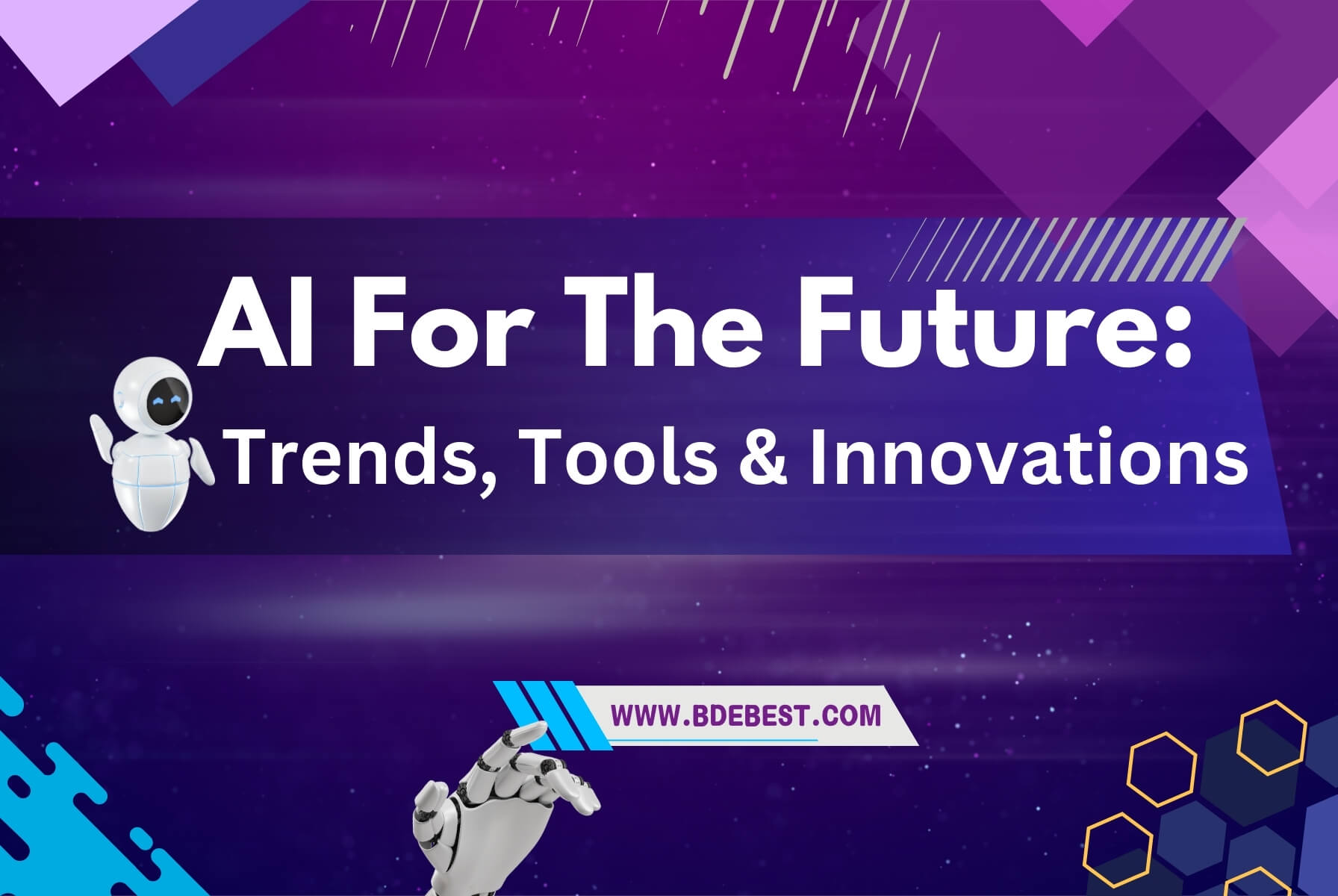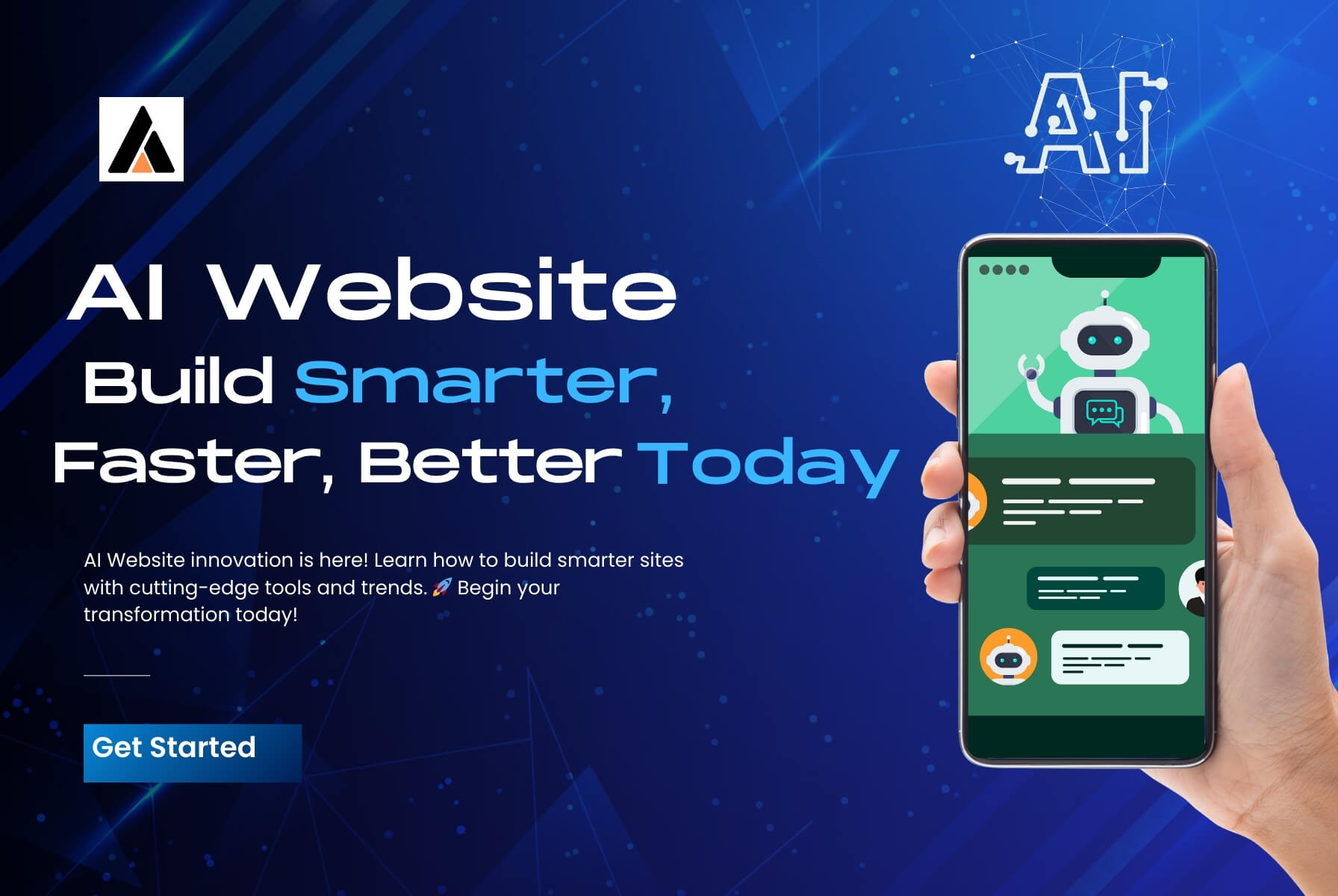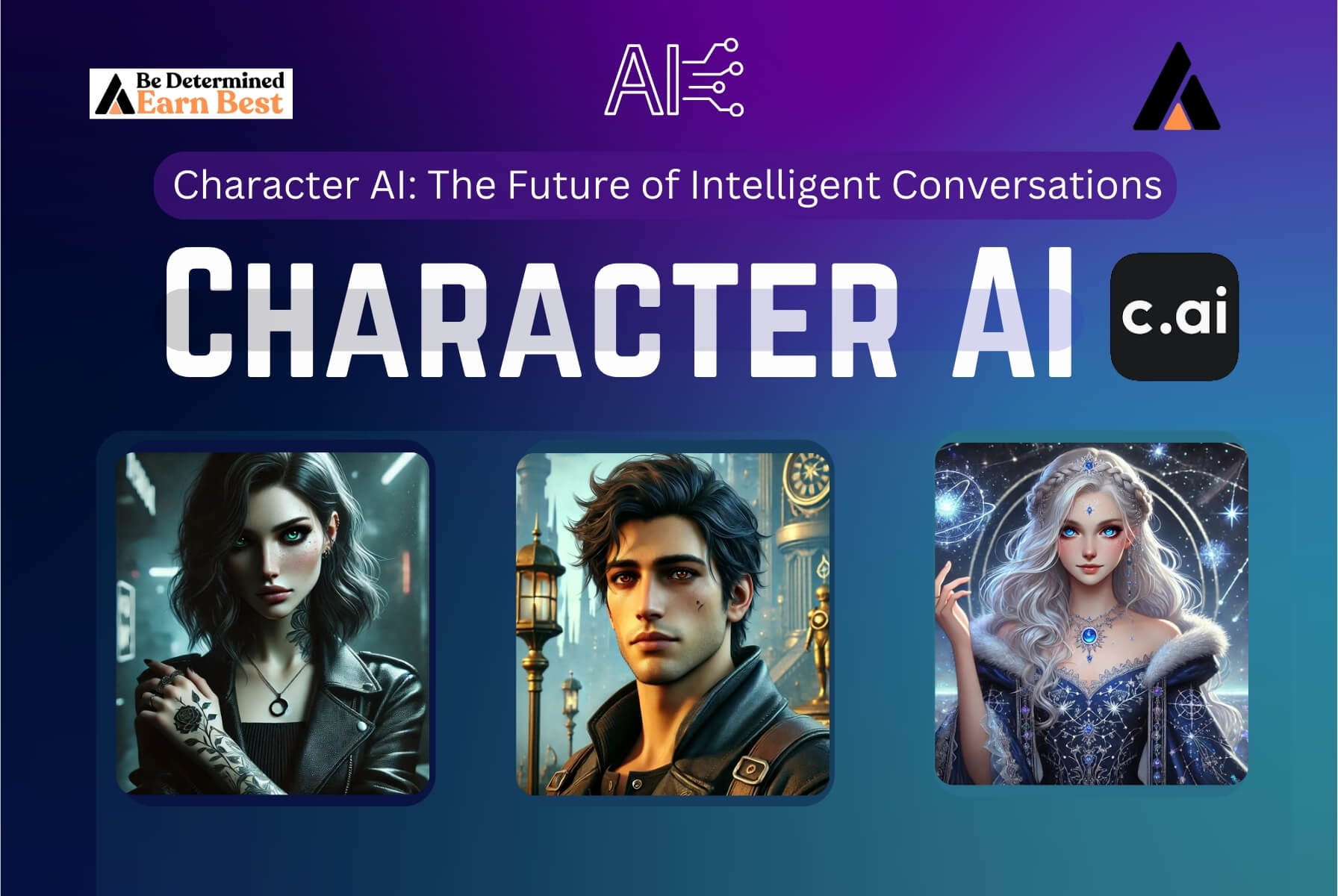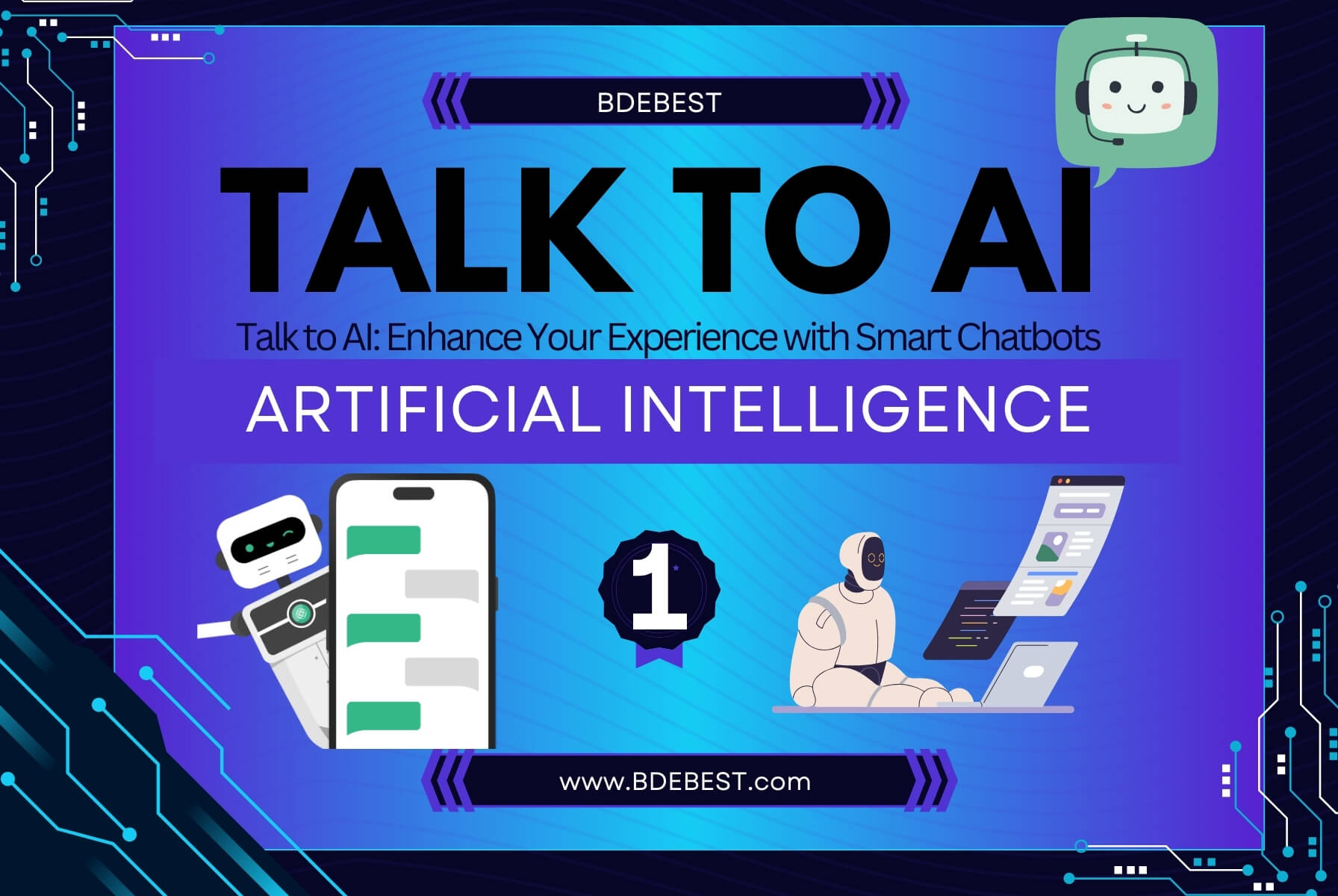Artificial Intelligence (AI) has reshaped the way we approach work, creativity, and decision-making. From streamlining workflows to enhancing innovation, AI tools have become indispensable in today’s world. With their growing influence across industries, it’s essential to explore the top 10 AI tools that are redefining the digital landscape.
This article will delve into what AI tools are, their transformative impact, and introduce the top 10 AI tools you should know about. Whether you’re a professional seeking to optimize workflows, a creative mind exploring innovative solutions, or a business owner aiming to drive efficiency, these tools offer something for everyone.
Understanding AI Tools
What Are AI Tools?
AI tools are specialized software programs designed to utilize artificial intelligence for tasks that traditionally required human expertise. These tools handle various activities, including content creation, design, data interpretation, and customer engagement. Unlike traditional software, AI tools learn and adapt over time, becoming smarter with usage.
Applications Across Industries
AI tools are versatile, with applications in numerous fields:
- Business Automation: Tools like chatbots and predictive analytics streamline operations, reducing time and effort for routine tasks.
- Creative Endeavors: From generating stunning artwork to drafting compelling content, AI tools are fueling creativity in unprecedented ways.
- Data Analysis and Decision-Making: AI-powered platforms process vast amounts of data quickly, providing actionable insights for informed decision-making.
By blending automation and intelligence, AI tools significantly outperform traditional software in adaptability, precision, and scalability.
Why Are AI Tools Essential?
The rise of top 10 AI tools stems from their profound impact on:
- Productivity: Automating repetitive tasks allows professionals to focus on strategic and high-value activities.
- Creativity: Tools like AI art generators and writing assistants expand creative possibilities, offering unique outputs tailored to user needs.
- Business Growth: AI empowers businesses to optimize processes, improve customer engagement, and make data-driven decisions for long-term success.
By understanding these benefits, you’ll appreciate why exploring the top 10 AI tools is essential for anyone looking to thrive in the modern digital age.
Criteria for Selecting the Top 10 AI Tools
The explosion of AI technology has brought countless tools to the forefront, each promising to revolutionize productivity, creativity, or decision-making. However, with so many options available, selecting the top 10 AI tools can feel overwhelming. How do you determine which tools genuinely deliver value?
This guide explains the essential criteria for choosing the best AI tools, helping you identify the ones that meet your needs. Whether you’re exploring top AI tools 2025 for personal or professional use, these evaluation metrics will ensure your decision is well-informed.
Key Metrics for Choosing the Best AI Tools
To rank among the top 10 AI tools, a platform must excel in several critical areas. Let’s dive into these evaluation criteria to understand their significance.
1. Usability
- Why It Matters: AI tools should simplify your tasks, not complicate them. A user-friendly interface and intuitive navigation ensure even non-technical users can harness the tool’s power effectively.
- What to Look For:
- Clear tutorials or onboarding processes.
- Customizable settings to match user preferences.
- Minimal learning curve, especially for beginners.
Example: A tool like Grammarly excels in usability, offering clear suggestions and an easy-to-understand dashboard.
2. Cost-Effectiveness
- Why It Matters: Budget constraints are a reality for individuals and businesses. A tool’s value should justify its price, balancing features and affordability.
- What to Look For:
- Free or trial versions to test before committing.
- Flexible pricing plans to cater to diverse budgets.
- ROI (Return on Investment) in terms of time saved or enhanced outcomes.
Example: Many of the top 10 AI tools offer freemium models, allowing users to explore basic features at no cost before upgrading to premium tiers.
3. Versatility
- Why It Matters: An AI tool’s adaptability determines its relevance across various tasks or industries. Versatile tools provide more bang for your buck by serving multiple purposes.
- What to Look For:
- Compatibility with other software or platforms.
- Multi-functional capabilities (e.g., content creation, analytics, automation).
- Scalability to grow with your needs.
Example: Canva’s Magic Design integrates AI for graphic design, presentations, and social media, making it a versatile choice for creatives.
4. User Reviews and Ratings
- Why It Matters: Real user feedback offers valuable insights into a tool’s performance and reliability. Reviews often highlight strengths and weaknesses that marketing materials might not reveal.
- What to Look For:
- Consistently high ratings across reputable platforms.
- Detailed user testimonials, especially from your industry or use case.
- Active customer support addressing user concerns.
Pro Tip: Search for “top 10 AI websites” and forums to read authentic reviews from industry professionals.
5. Innovation
- Why It Matters: The technology landscape evolves rapidly, and outdated tools can quickly become obsolete. Prioritize tools that innovate and stay ahead of the curve.
- What to Look For:
- Regular updates introducing new features.
- Unique functionalities that set the tool apart.
- Integration of emerging technologies like AR/VR or advanced machine learning.
Example: Tools like OpenAI’s ChatGPT are constantly updated to provide users with cutting-edge capabilities, maintaining their place among the top AI tools 2025.
The Top 10 AI Tools for 2025
Artificial intelligence continues to revolutionize industries worldwide, offering innovative solutions for businesses, creatives, and individuals alike. From writing assistance to advanced analytics, the top 10 AI tools of 2025 showcase the versatility and transformative power of AI. This guide dives deep into these tools, highlighting their features, benefits, and ideal use cases.
Tool #1: ChatGPT by OpenAI
Overview:
ChatGPT is a powerful conversational AI tool capable of generating human-like responses. It excels in content creation, customer service, and even coding support.
Industries:
- Customer service (chatbots)
- Marketing (content generation)
- Education (interactive learning)
Strengths:
- User-friendly and highly versatile.
- Extensive applications across multiple domains.
Limitations:
- Requires customization for industry-specific use.
- Free version may have usage limits.
Best Use Case:
Generating engaging blog posts or handling customer queries seamlessly.
Tool #2: Jasper AI
Overview:
Jasper AI is tailored for marketers and content creators, offering advanced tools for writing blog posts, ad copy, and social media content.
Key Features:
- Tone and style customization.
- Integration with SEO tools for optimized content.
Benefits:
- Saves time on content ideation and creation.
- Delivers consistent, high-quality output.
Best Use Case:
Creating ad campaigns and marketing materials quickly and effectively.
Tool #3: MidJourney
Overview:
MidJourney uses AI to generate stunning digital art, catering to creatives looking for unique visual solutions.
Ideal Audience:
- Graphic designers
- Artists
- Content creators
Applications:
- Concept art for games and films.
- Custom illustrations for marketing campaigns.
Best Use Case:
Designing visually compelling assets for personal or professional projects.
Tool #4: Grammarly
Overview:
Grammarly is an AI-driven writing assistant that ensures clarity, correctness, and tone appropriateness in your writing.
Premium Features:
- Advanced grammar and style suggestions.
- Plagiarism detection.
Benefits:
- Ideal for professionals, students, and anyone aiming to improve their writing.
- Real-time editing capabilities across platforms.
Best Use Case:
Polishing documents, emails, and reports to ensure they are error-free and engaging.
Tool #5: DALL-E
Overview:
DALL-E is a groundbreaking AI for generating images from textual descriptions.
Practical Applications:
- Marketing (ad creatives)
- Education (visual aids)
- Entertainment (concept art)
Success Stories:
Used by businesses to create unique visuals that align with their branding.
Best Use Case:
Turning creative ideas into visuals for presentations, social media, or advertising.
Tool #6: TensorFlow
Overview:
TensorFlow is an open-source machine learning platform that empowers developers to build AI models.
Key Features:
- Extensive libraries for data analysis and model building.
- Community support and comprehensive documentation.
Ideal Users:
- Data scientists
- AI researchers
- Developers
Best Use Case:
Creating scalable AI models for research or commercial applications.
Tool #7: Canva’s Magic Design
Overview:
Canva’s Magic Design integrates AI to simplify graphic design, making it accessible to everyone.
Popular Use Cases:
- Creating social media posts.
- Designing professional presentations.
Benefits:
- Drag-and-drop simplicity.
- AI-generated design suggestions.
Best Use Case:
Non-designers creating professional-grade visuals in minutes.
Tool #8: Notion AI
Overview:
Notion AI organizes workflows, generates content, and simplifies task management, making it a productivity powerhouse.
Target Audience:
- Teams managing projects.
- Individuals organizing personal goals.
Applications:
- Automating task lists.
- Generating meeting notes or content outlines.
Best Use Case:
Streamlining team collaboration and personal productivity.
Tool #9: Synthesia
Overview:
Synthesia enables the creation of professional videos with AI avatars and voiceovers.
Target Market:
- Businesses creating training modules.
- Educators developing e-learning content.
Key Features:
- Customizable AI avatars.
- Multi-language support.
Best Use Case:
Creating engaging training videos or marketing presentations.
Tool #10: IBM Watson
Overview:
IBM Watson provides enterprise-level AI solutions, including analytics, machine learning, and customer engagement tools.
Applications:
- Healthcare (diagnostics support)
- Finance (risk analysis)
- Retail (personalized customer experiences)
Benefits:
- Advanced analytics capabilities.
- Scalable solutions for large organizations.
Best Use Case:
Implementing AI-driven strategies in complex, data-intensive industries.
These top 10 AI tools represent the cutting edge of innovation in 2025. From creative solutions like MidJourney and Canva’s Magic Design to enterprise-level platforms like IBM Watson, these tools cater to diverse needs and industries.
Whether you’re looking for AI-powered tools for automation, content creation, or advanced analytics, these platforms offer unparalleled functionality and impact. Start exploring these top AI tools today and transform the way you work, create, and innovate.
Benefits of Using AI Tools
1. Increased Productivity and Efficiency
AI tools automate repetitive tasks, freeing up time for more strategic or creative work. Whether it’s drafting content, managing schedules, or analyzing data, these tools streamline workflows, allowing you to achieve more in less time.
Example: Tools like Grammarly or ChatGPT enhance productivity by assisting with writing tasks, ensuring error-free and polished outputs with minimal effort.
Why It Matters:
- Saves time on mundane tasks.
- Boosts output quality with precision and speed.
2. Cost Savings Over Traditional Methods
AI tools often replace expensive, labor-intensive processes with affordable, scalable solutions. Many tools offer freemium models or subscription tiers that cater to various budgets, making them accessible to startups and established businesses alike.
Example: Canva’s Magic Design eliminates the need for hiring graphic designers for basic tasks, allowing businesses to save significantly on creative costs.
Why Use AI Tools for Cost Efficiency?
- Reduces reliance on external resources.
- Offers excellent ROI by improving outcomes at a lower cost.
3. Accessibility to High-Level Technologies
AI tools bridge the gap between small businesses and enterprise-level technologies. What was once exclusive to large corporations is now available to anyone with an internet connection, empowering entrepreneurs, educators, and individuals.
Example: Platforms like Notion AI enable even small teams to manage workflows efficiently, fostering innovation without hefty investments.
Why It Matters:
- Levels the playing field for smaller players.
- Democratizes access to cutting-edge tools.
By harnessing the power of the top 10 AI tools, individuals and businesses can unlock their full potential, regardless of their scale or resources.
Common Challenges and Solutions
While the benefits of AI tools are significant, users often face challenges that can hinder their effectiveness. Let’s address these issues and explore actionable solutions.
1. Learning Curves
The Challenge: Many users find AI tools overwhelming, especially those new to the technology.
Solution:
- Start with user-friendly platforms like Canva or Grammarly.
- Leverage tutorials, webinars, and documentation provided by most top 10 AI websites to familiarize yourself with the tool.
- Invest time in trial versions to practice without financial commitment.
Pro Tip: Choose tools with intuitive interfaces to ease the transition.
2. Cost of Premium Features
The Challenge: While many AI tools offer free versions, the most impactful features often come with premium plans. This can be a hurdle for individuals and small businesses.
Solution:
- Prioritize tools offering freemium models to test features before upgrading.
- Look for discounts, bundles, or educational licenses that reduce costs.
- Evaluate ROI by comparing tool performance with its subscription cost.
Example: Jasper AI provides tiered pricing, making it adaptable to various budgets.
3. Ethical Concerns
The Challenge: Ethical issues, including AI bias and copyright concerns, are critical in using AI tools responsibly.
Solution:
- Choose tools from reputable providers committed to ethical practices.
- Regularly review content for potential biases or inaccuracies.
- Stay updated on AI regulations to ensure compliance.
Example: Platforms like IBM Watson emphasize transparency and ethical AI usage.
Solving AI Issues for Better Integration
Adopting AI tools successfully requires a proactive approach to overcoming challenges. Here are some universal tips:
- Educate Yourself: Stay informed about the latest features and ethical standards related to AI tools.
- Seek Community Support: Join forums and groups discussing the top 10 AI tools to exchange tips and insights.
- Regular Updates: Opt for tools with consistent updates and responsive customer support to address bugs or usability concerns.
By understanding and addressing these challenges, you can unlock the full potential of the top 10 AI tools, ensuring they work for you rather than against you.
Future Trends in AI Tools
The evolution of AI tools is driven by technological advancements and user demands. Here’s a look at the most promising trends shaping the AI tools trends 2025 and beyond.
1. Integration with AR/VR
- What to Expect: The merging of AI with Augmented Reality (AR) and Virtual Reality (VR) will redefine immersive experiences. Envision AI-powered assistants providing real-time guidance to users in immersive virtual environments.
- Applications:
- Training simulations for businesses and education.
- Interactive customer experiences in retail and real estate.
Example: AI tools integrated with AR/VR could help designers visualize 3D spaces or assist gamers with in-game strategies.
2. Enhanced Personalization Features
- What to Expect: AI tools will become even more adept at tailoring their outputs to individual preferences and behaviors. From hyper-customized marketing messages to adaptive learning platforms, personalization will be key.
- Applications:
- Content creation tools powered by AI can generate outputs that are uniquely tailored in tone and style.
- Learning platforms adapting to students’ progress and learning styles.
Example: Jasper AI’s tone customization hints at the next level of personalization where content feels tailor-made for its audience.
3. Greater Accessibility and Affordability
- What to Expect: As technology scales, the cost of AI tools will decrease, making them accessible to small businesses and individuals. Freemium models and open-source platforms will dominate.
- Applications:
- Affordable solutions for startups and freelancers.
- Tools designed for non-technical users, with intuitive interfaces and no-code functionalities.
Example: Open-source frameworks like TensorFlow are paving the way for widespread adoption of AI technologies.
4. Predictions for the Next 5-10 Years
- Smarter Automation: AI tools will handle complex tasks, such as decision-making and predictive analytics, with minimal human intervention.
- Cross-Platform Integrations: Seamless integration across software ecosystems will make AI tools indispensable for productivity.
- AI for Sustainability: Tools will focus on solving global challenges, such as climate change and resource optimization.
Pro Tip: Stay updated on the future of AI tools by following industry reports and updates from the top 10 AI websites.
A Guide to Choosing the Right AI Tool for Your Needs
Picking the ideal AI tool requires thorough consideration of your objectives, financial limits, and the specific features you need. Follow these step-by-step suggestions to make a well-informed choice.
1. Define Your Goals
- Personal Goals: Are you looking for a tool to automate tasks, enhance creativity, or improve productivity?
- Professional Goals: Do you need AI tools for marketing, customer service, or data analysis?
Example: A writer might benefit from tools like ChatGPT, while a graphic designer may prefer Canva’s Magic Design.
2. Consider Your Budget
AI tools range from free versions to premium plans. Evaluate what fits your budget without compromising essential features.
Pro Tip: Start with freemium models to test functionalities before committing to paid subscriptions.
3. Evaluate Features and Integrations
- Must-Have Features: Identify non-negotiable capabilities, such as language processing, image generation, or workflow automation.
- Integration Requirements: Ensure the tool works seamlessly with your existing software ecosystem.
Example: Notion AI integrates with productivity apps, making it ideal for team collaboration.
4. Use a Comparison Table
| Tool | Best For | Key Features | Pricing |
| ChatGPT | Content creation | Conversational AI, coding | Freemium & Paid Plans |
| Jasper AI | Marketing content | SEO optimization, tone control | Paid Plans Only |
| Canva’s Magic Design | Graphic design | AI-assisted templates | Freemium & Paid Plans |
| TensorFlow | Machine learning | Open-source, customizable | Free |
Pro Tip: Use the comparison table to weigh the pros and cons of different tools.
5. Leverage User Reviews
Research reviews on the top 10 AI websites and forums to learn about real-world performance and reliability.
The Power of the AI Tools
Artificial Intelligence has transitioned from a futuristic idea to a crucial element of everyday life. The top 10 AI tools covered in this guide illustrate how AI is transforming industries, enhancing productivity, and fostering creativity. Whether you’re a business professional, a content creator, or a tech enthusiast, embracing AI tools is the key to staying competitive and innovative.
Key Takeaways
- Versatility: From content creation with ChatGPT to data analysis with TensorFlow, AI tools cater to a wide range of applications.
- Cost-Effectiveness: Many tools offer affordable or even free options, making advanced technology accessible to individuals and small businesses.
- Future-Ready: Emerging trends like AR/VR integration and enhanced personalization ensure that AI tools will continue to evolve and deliver greater value.
These tools are not just a convenience—they’re a necessity for success in a fast-paced, tech-driven world.
Ready to unlock the potential of AI? Explore the top 10 AI tools today to discover how they can transform your workflows, amplify your creativity, and elevate your results. Don’t just take our word for it—test these tools and share your experiences. Participate in discussions about how AI is driving innovation and transforming the future.
FAQ Section
1. What Are AI Tools?
AI tools are software applications that use artificial intelligence to perform tasks such as writing, designing, coding, or analyzing data. They enhance efficiency, creativity, and decision-making.
2. What Should I Consider When Selecting the Best AI Tool?
- Define your needs: What tasks do you want to automate or improve?
- Consider your budget: Are you looking for free tools or premium solutions?
- Evaluate features: Look for tools that offer integrations and functionalities aligned with your goals.
- Check reviews: Explore user feedback on top 10 AI websites to find reliable options.
3. Are AI Tools Expensive?
While many AI tools offer free versions, accessing premium features often requires a subscription. However, the value they provide, such as saving time and improving results, often justifies the cost.
4. Which AI Tool Is Best for Content Creation?
For writing, Jasper AI and ChatGPT are top choices. If you need visual content, Canva’s Magic Design excels in creating eye-catching graphics and designs.
5. Can AI Tools Replace Human Workers?
AI tools are designed to augment human abilities, enhancing efficiency rather than replacing human involvement. By automating repetitive tasks, they allow individuals to focus on creative and strategic work, increasing overall efficiency.
6. Are AI Tools Safe to Use?
Most AI tools prioritize security, but it’s essential to review their privacy policies and data protection measures. Opt for reputable providers to minimize risks.
7. What Is the Future of AI Tools?
The future of AI tools includes trends like:
- AR/VR Integration: Creating immersive, AI-powered experiences.
- Advanced Personalization: Tailoring outputs to individual needs.
- Accessibility: Making AI affordable and user-friendly for everyone.
AI tools will continue to redefine how we work and interact with technology.
By leveraging the top 10 AI tools, you’re not just adopting a trend—you’re embracing a transformative technology that can propel you toward success. Whether for personal growth or professional advancement, these tools are here to stay. Take the first step today!







